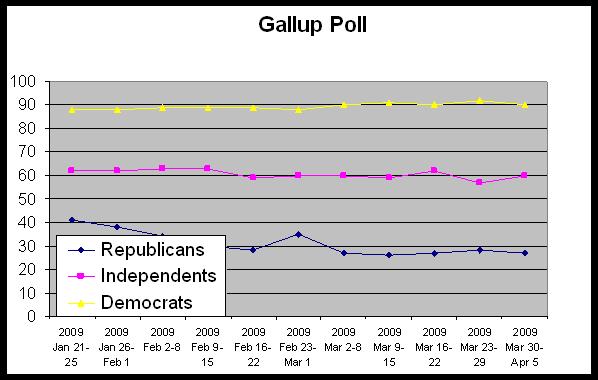Last Friday Barack Obama signed into law H.R. 2055, the “Consolidated Appropriations Act, 2012,” which is an omnibus year-end spending bill. While signing the bill into law, however, he issued a statement that declared several provisions within the bill as either unconstitutional or as infringing on his executive powers. These include provisions limiting his flexibility in dealing with enemy combatants now held at Guantanamo Bay prison, and others that forced him to consult with congressional committees before authorizing military exercises costing above a specified dollar amount or that required congressional approval before allowing U.S. forces to operate under U.N. command. In the signing statement posted on the White House website, Obama notes, “My Administration has repeatedly communicated my objections to these provisions, including my view that they could, under certain circumstances, violate constitutional separation of powers principles. In approving this bill, I reiterate the objections my Administration has raised regarding these provisions, my intent to interpret and apply them in a manner that avoids constitutional conflicts, and the promise that my Administration will continue to work towards their repeal.”
As the name suggests, a signing statement is simply a declaration by the president explaining how he interprets the legislation that he has signed into law. Sometimes those statements merely clarify language, but often they declare a president’s intent to, in effect, disregard those portions of the law that he deems unconstitutional. Although presidents dating back to Monroe have made use of signing statements, they became controversial during the Bush presidency, in part because of a highly-publicized Boston Globe article by Charlie Savage in 2006 that claimed “President Bush has quietly claimed the authority to disobey more than 750 laws enacted since he took office.” More accurately, as the Globe later acknowledged, Bush had in fact challenged about 750 provisions contained in about 125 bills during his first six years in office, although this correction was often overlooked by Bush’s critics. The distinction is not inconsequential; for example, using Savage’s original method of counting, Obama would have challenged 20 “laws” alone in this one signing statement. So we need to be careful how we define a “law.”
Savage, who later won a Pulitzer Prize for his work on this topic, linked Bush’s seemingly extraordinary use of signing statements (in fact, Bush issued far fewer than did his predecessor Bill Clinton) to Bush’s broader claim of enhanced executive power rooted in the theory of the “unitary executive”. That controversy was not lost on candidate Obama who, in running for the Presidency, made it clear he would not follow Bush’s precedent. Signing statements, Obama proclaimed in 2008, are “not part of his power, but this is part of the whole theory of George Bush that he can make laws as he goes along. I disagree with that. I taught the Constitution for 10 years. I believe in the Constitution and I will obey the Constitution of the United States. We’re not going to use signing statements as a way of doing an end-run around Congress.”
The reality, however, is that President Obama has been quite willing to utilize signing statements, albeit at a slightly reduced rate compared to recent presidents. By one count he has issued almost 20 such statements to date. For comparison purposes, Bill Clinton issued some 92 signing statements in his first three years in office – almost as many as Bush did in six years – and close to 400 during his two terms. However, as this Congressional Research Service report suggests, a focus on the number of signing statements alone can be misleading. Indeed, constitutional scholars on both the Left and the Right are in basic agreement that signing statements themselves are not the issue – it is the president’s intent when issuing the statement that is of concern. In particular, beginning with the Reagan administration there has been a marked increase in the number of signing statements issued by presidents that raise constitutional objections to laws. According to the CRS report issued in 2007, “President Reagan issued 250 signing statements, 86 of which (34%) contained provisions objecting to one or more of the statutory provisions signed into law. President George H. W. Bush continued this practice, issuing 228 signing statements, 107 of which (47%) raised objections. President Clinton’s conception of presidential power proved to be largely consonant with that of the preceding two administrations. In turn, President Clinton made aggressive use of the signing statement, issuing 381 statements, 70 of which (18%) raised constitutional or legal objections. President George W. Bush has continued this practice, issuing 152 signing statements, 118 of which (78%) contain some type of challenge or objection.” To date, based on a quick read of his statements, I estimate loosely that about half of Obama’s signing statements contain constitutional objections but, until I do a more systematic analysis, this should be viewed as a very rough estimate.
It appears, then, that Obama has had a significant change of heart when it comes to signing statements during the transition from candidate to President and instead has adopted the view of every president going back to Reagan that their use is not only acceptable but necessary. But why? The answer, I think, is that Obama – as he did with other precedents centered on the War on Terror – has realized that signing statements serve a useful purpose in the modern lawmaking process. Rather than a grab for power, signing statements instead illustrate what Don K. Price called the unwritten constitution: adaptations in how the President and Congress interact that, by filling in interstices in the written Constitution, helped adapt that document to the exigencies of governing in the modern age. In this case, the signing statements serves as a means through which presidents can influence the legislative process.
However, doesn’t the Constitution’s veto provision specify what a president should do if he finds a bill constitutionally objectionable? The problem from a president’s perspective with the veto is that it is often an all-or-nothing alternative. Because presidents cannot selectively excise those portions of a bill they find objectionable, a veto means rejecting the entire piece of legislation, even though it may contain many provisions the president supports. Congress, of course, realizes this, and in the modern era has become adept at larding bills with extraneous provisions to which they know the President may object. This is particularly the case with appropriations bill, which now frequently contain non-budgetary policy-relevant provisions that presidents – as Obama did with the 2012 omnibus appropriation bill – cannot accept on constitutional grounds. But if they include enough legislative sweeteners, or attach the provisions to bills that must pass every year, they calculate the president will be forced to accept the entire dose of legislative medicine. Faced with this strategy, presidents have adapted by signing these bills into law while publicly stating which provisions they accept, and which they find objectionable on constitutional grounds. Note that Congress can and does grumble about this, and more than once members have threatened legislative retaliation. But these bills have gone nowhere – an implicit acknowledgement, I think, that legislators view signing statements as consistent with the system of shared powers rather than a repudiation of it. They recognize why presidents’ issue these statements, and as long as the dispute in interpretation stays at the level of rhetoric, both sides are willing to look the other way.
And, of course, this is the crucial question: are these mere rhetorical disputes, or have presidents’ signing statements had a measurable impact on how legislation has been implemented? Alas, it is difficult to answer this question. For one such effort, see this GAO study which looked at the implementation of 10 provisions in laws signed by George Bush but which included a signing statement. The bottom line? The GAO found no evidence that the signing statements hindered implementation; in their words “Although we found that three provisions have not yet been implemented, we cannot conclude that agency noncompliance was the result of the President’s signing statements.”
The lack of systematic evidence that signing statements have altered the balance of power has not stopped critics from viewing their use as evidence of the rise of an imperial president. Of course, who makes these charges depends on whose ox is being gored; under Bush, the charges emanated from the Left. Today, they come from the Right. Rather than an imperial presidency, however, I think signing statements are better viewed as the latest manifestation of how the President and Congress adapt the lawmaking process within a system of shared powers. The increase in the use of signing statements for constitutional reasons really starts with Reagan, not Bush, and it does so because this is when an increasingly polarized Congress begins to make greater use of the budget process to push broader policy goals. Obama has followed in Reagan’s – and Bush’s – footsteps not because he embraces an imperial presidency. It’s because in the current governing context their use follows logically from the Constitutional-based incentives that give him a stake in the legislative process.
6:30 Addendum: I just noticed that Andy Rudalevige has a related piece up here at the Monkey Cage site.



